
Regenerative tourism: moving beyond sustainable and responsible tourism
Regenerative tourism represents a sustainable way of travelling and discovering new places. People have been travelling for centuries. Travel with tourism as a primary motive has only developed into one of the most important economic sectors worldwide over the past few decades. This development has not been without negative impacts. Tourism has major environmental impacts (such as biodiversity loss, landscape impact, waste and water scarcity) and social impacts (such as overtourism, gentrification and social uprising).
Regenerative tourism and the idea of ‘building back better’ is a concept that has increasingly received attention as a new way to travel. As the vulnerabilities of the tourism sector were further highlighted during the COVID-19 pandemic, and for some this was the window of opportunity to rethink tourism such as regenerative tourism.
Contents of this page
- Regeneration gains importance after the Covid-19 pandemic
- What is regenerative tourism?
- Regenerative tourism: the next step in sustainable tourism
- Requirements for businesses to be regenerative
- Thirteen principles of a regenerative tourism business
- Become certified as a regenerative tourism provider
- Examples of successful regenerative tourism businesses
1. Regeneration gains importance after the Covid-19 pandemic
The idea of regeneration — renewing or restoring something — is not new, but it’s only been in the last few years that regeneration in sectors ranging from agriculture to architecture has entered the mainstream conversation. The concept began to surface in mainstream conversation within the tourism industry in 2019. Tourism expert Anna Pollock put regenerative tourism strongly on the agenda with Visit Flanders and the Travel to Tomorrow Summit. The COVID-19 pandemic has further emphasised the vulnerabilities of the sector (see table 1) and the need to rethink tourism. Over the last few months of 2021, regenerative tourism gained importance, an example is the influential article ‘Move over, Sustainable travel. Regenerative travel has arrived’.
Because of its recent development, much is still unclear, and what is known is often confusing, or difficult to apply in practice. In this study, we will:
- define and explain regenerative tourism (what is it?), showing what it can mean for your tourism business;
- provide you with an overview of what is included and what is not;
- explain how tourism businesses can become certified as a regenerative tourism provider; and lastly,
- provide you with examples of tourism businesses that already have successfully incorporated regenerative tourism into their business operations.
Table 1: consequences of COVID-19 for global tourism
Tourism worldwide and its vulnerability due to COVID-19:
|
Source: World Travel & Tourism Council (2020)
2. What is regenerative tourism?
To incorporate the ideas behind regenerative tourism into your business, it is important to first find out what it actually is. So let’s start off with the definition of regenerative tourism. The term has received quite some attention in the academic world and society, but what are we actually talking about? Regenerative tourism represents a sustainable way of travelling and discovering new places. Its main goal is for visitors to have a positive impact on their holiday destination, meaning that they leave it in a better condition than how they found it. A concept that goes beyond "not damaging" the environment and that aims to actively revitalise and regenerate it, resulting in a positive cycle of impacts (see figure 1 below) on local communities and economies: sustainable regeneration. Concrete examples include farmers that together with tourism professionals restore degraded lands (desert), local communities conserving pristine rainforest with ecolodges, or restoring biodiversity by stopping livestock grazing and reintroducing wild animals.
Figure 1: Virtuous cycle of regenerative tourism
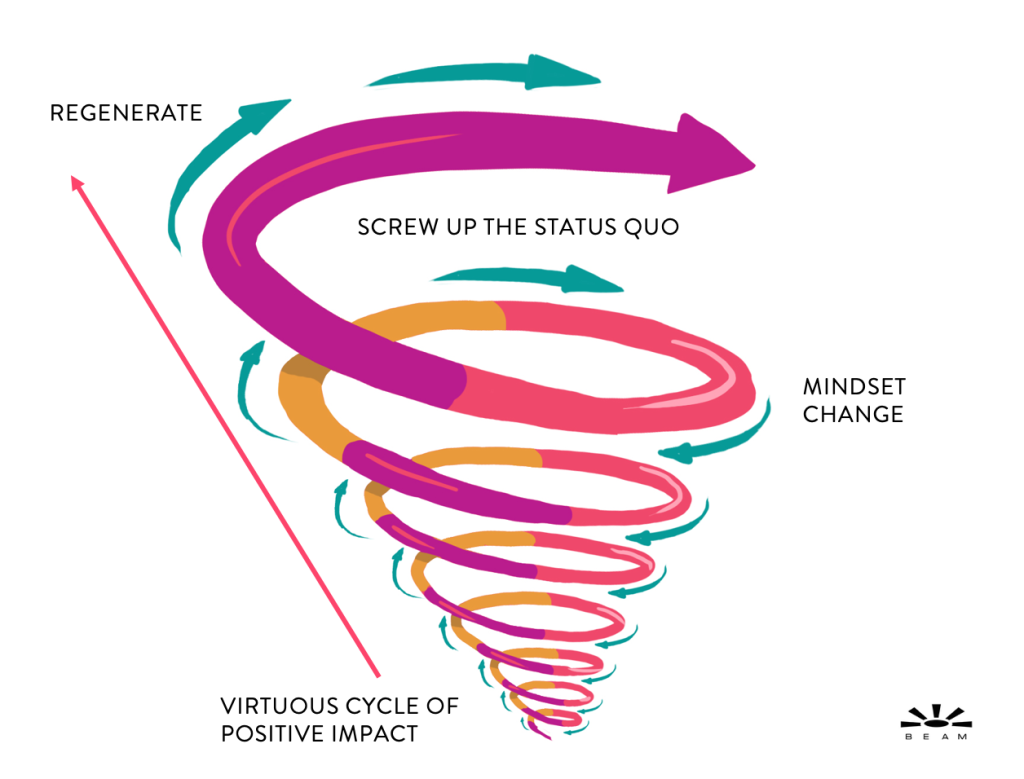
Source: Beam Inc Consult
3. Regenerative tourism: the next step in sustainable tourism
You might be wondering how this is different from sustainable tourism. Well, if “sustainable tourism” was the jargon of yesterday, “regenerative tourism” is the industry buzzword of today. But the implications of regenerative tourism are more than just a temporary trend. “Regenerative tourism” is the idea that tourism should leave a place better than it was before. (“Sustainability,” in comparison, is leaving something as it is so that it stays the same; in other words, not causing any extra damage). Also, in the case of sustainable tourism, this often results in what tourism expert Jasper Heslinga calls a trade-off between negative and positive impacts of tourism. As you can see in figure 2, regenerative tourism is going beyond sustainable tourism.
Figure 2: Features of regenerative tourism compared to normal and sustainable tourism
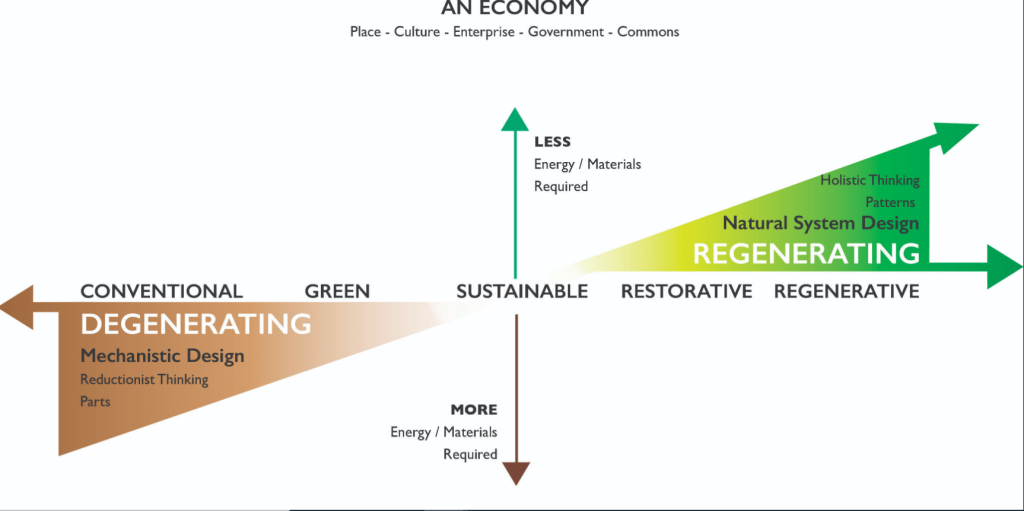
Source: Kosmos Journal
Regenerative tourism therefore has a different goal and requires a change in our economic model and the way we look at society. There is a need to move from seeking "sustainable" growth in volume to a more qualitative development that improves human health and wellbeing through ecosystems’ health. Many of these goals tourism can contribute to can be found in figure 3. Regenerative tourism offers an important set of solutions to rethink and rebuild the tourism industry. It also improves local economies, preserves local cultures and biodiversity while offering memorable, authentic life-changing experiences to the guests and allowing destinations to improve.
Figure 3: UN Sustainable Development Goals
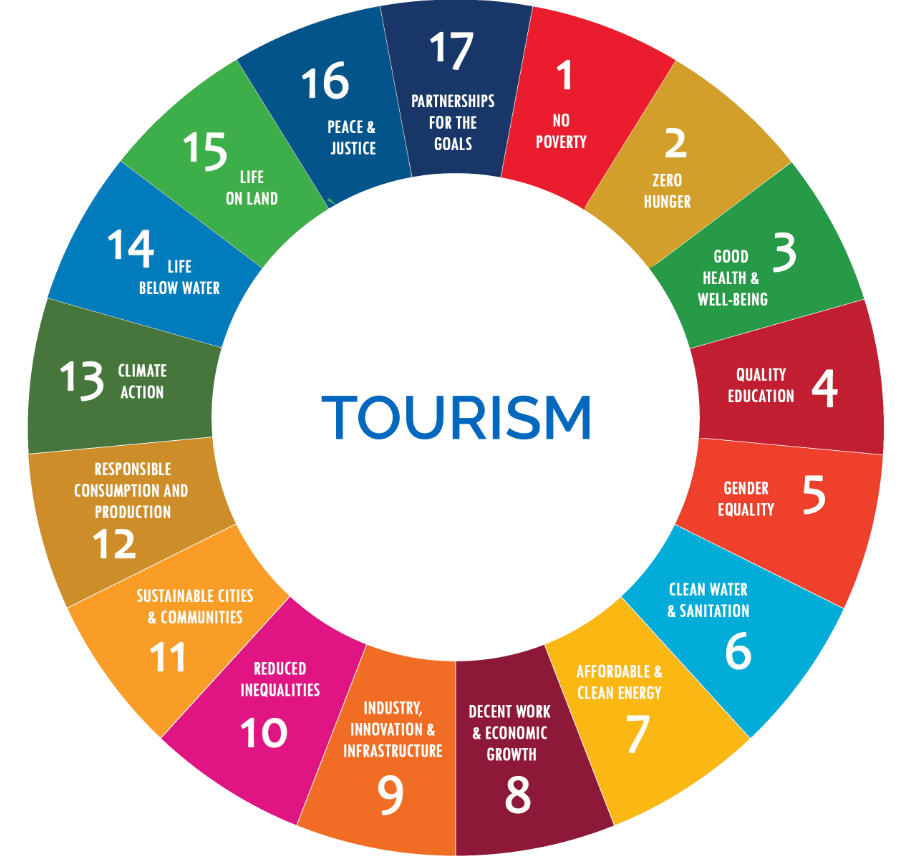
Source: www.tourism4sdgs.org
All stakeholders in the tourism value chain, including travellers, businesses, employees and communities have a shared responsibility in preserving the local assets and enabling the destination as a whole to develop. According to United Nations tourism can contribute to the Sustainable Development Goals (SDGs).
In line with these SDGs, the United Nations have also elaborate on a set of regenerative tourism principles that draw upon nature's wisdom, which are the following:
- Holistic understanding and living-systems approach: This is the understanding that everything is connected with everything and that the interactions between every stakeholder throughout the entire tourism value chain have an impact on each other and the entire ecosystem.
- Collaborative: This is about stimulating collaboration and partnerships between a wide range of stakeholders from government, to the private sector, to the voluntary sector, and the communities. This is different from the current competitive mindset that governs our dominant economic systems.
- Diverse by nature: Diversity in various income streams helps decrease the reliance of ecosystems and communities on tourism income. Diversifying between the different segments of the market – leisure vs. business and domestic vs. international – also helps to reduce various economic and geopolitical risks and enhances resilience.
- Inclusive and equitable: Which is about the involvement of the local communities to strengthen the overall ecosystem. This can, for example, be collaboration with local suppliers; asking around who needs rooms and space; considering supporting refugees or homeless people.
- Transformational and inspirational: This principles is about creating experiences for the guests that are life changing and that bring forward the uniqueness of each place, and about offering activities that showcase the cultural heritage, folklore, gastronomy, local landmarks and wildlife responsibly.
- Environmentally responsible: This is taking good care for the environment through the management of natural resources and biodiversity and the protection of fragile landscapes and wildlife.
- Cultural stewardship: Protection of local cultural heritage and traditions and local people who happen to be the best persons to take care of biodiversity and natural ecosystems thanks to their ancient wisdom and knowledge passed on from generation to generation.
4. Requirements for businesses to be regenerative
Linking the concept of regenerative tourism to the business level is not easy. Let’s start with why businesses should be regenerative. Well, businesses today have to recognise that the environment they operate in is a living system within a larger living system. This means that their business is part of something bigger, which requires a different mindset of entrepreneurs in the tourism business. Beam describes three requirements that organisations and businesses can use to their advantage if they want to have a successful business in the emerging new era: the Moral requirement, Market requirement, and Technology requirement. These requirements are all connected to each other and help businesses become regenerative.
Figure 4: Three requirements for being regenerative
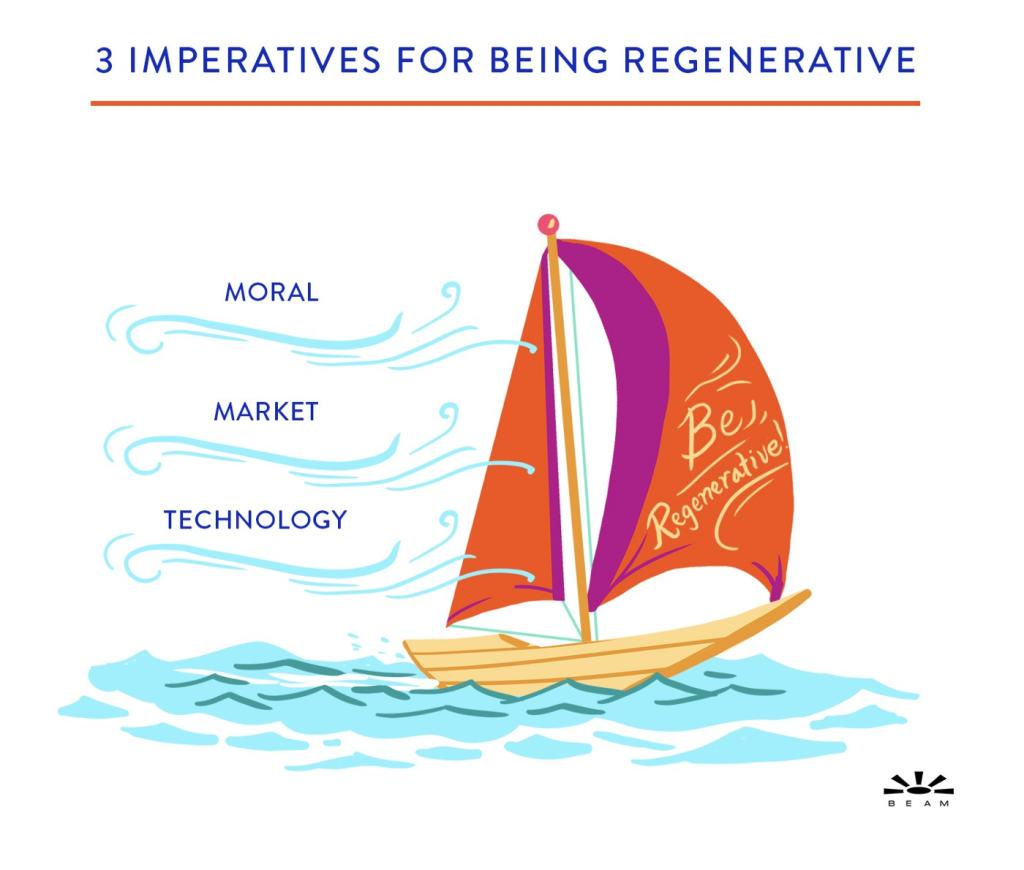
Source: Beam Inc. Consult
1. Moral requirement — Do the Right Thing
Keep what has worked well in your business in the past, but recognise what’s no longer working, and change and regenerate these things. Create a positive future that contributes to the greater social and living system and do it as part of enabling your business to develop.
2. Market requirement — It will pay-off!
You should trust in the fact that this regenerative change will pay off eventually by attracting customers, engaging employees, and better positioning your company for future growth. People today want to do business with companies who care about their impact environmentally and socially, and investors increasingly want to know the most accurate risk assessments for failing to address these issues.
3. Technology requirement — Create whole system advantages
For big changes you need big technological innovation. Those entrepreneurs who stop making simple quick fixes and doing minor product improvements, will open up new opportunities for themselves to use new technological innovations and solve global problems for their companies, communities, and industries.
5. Thirteen principles of a regenerative tourism business
Taking the shift in perspective that was described in the previous section as the starting point, the next step is to find out what regenerative tourism means for businesses operating in the sector. Future of Tourism urge that for businesses to pursue regenerative tourism, there needs to be worldwide commitment to the following set of principles:
- See the whole picture: recognise that most tourism by its nature involves the destination as a whole, not only industry businesses, but also its ecosystems, natural resources, cultural assets and traditions, communities, aesthetics, and built infrastructure.
- Use sustainability standards: respect the publicly available, internationally approved minimum criteria for sustainable tourism practices maintained by the Global Sustainable Tourism Council (GSTC) for both industry and destinations.
- Collaborate in destination management: seek to develop all tourism through a collaborative management structure with equal participation by government, the private sector, and civil society organisations that represent diversity in communities.
- Choose quality over quantity: manage tourism development based on quality of visitation, not quantity of visitors, so as to enhance the travel experience while sustaining the character of the destination and benefiting local communities.
- Demand fair income distribution: set policies that counter unequal tourism benefits within destination communities and that maximise retention of tourism revenues within those communities.
- Reduce tourism's burden: account for all tourism costs in terms of local tax burdens, environmental and social impacts, and objectively verifiable disruption. Ensure investments are linked to optimising net-positive impacts for communities and the environment.
- Redefine economic success: rather than raw contribution to growth in GDP, favour metrics that specify destination benefits such as small business development, distribution of incomes, and enhancement of sustainable local supply chains.
- Mitigate climate impacts: strive to follow accepted scientific consensus on needed reductions in greenhouse gas emissions. Invest in green infrastructure and a fast reduction in transport emissions involved in tourism - air, sea, and ground.
- Close the loop on resources: when post-pandemic safety allows, turn away from use of disposable plastics by tourism businesses, and transition to circular resource use.
- Contain tourism's land use: limit high-occupancy resort tourism to concentrated areas. Discourage resort sprawl from taking over coasts, islands, and mountain areas, so as to retain geographical character, a diverse economy, local access, and critical ecosystems.
- Diversify source markets: in addition to international visitation, encourage robust domestic tourism, which may be more resilient in the face of crises and raise citizens' perceived value of their own natural and cultural heritage.
- Protect sense of place: encourage tourism policies and business practices that protect and benefit natural, scenic, and cultural assets. Retain and enhance destination identity and distinctiveness. Diversity of place is the reason for travel.
- Operate business responsibly: incentivise and reward tourism businesses and associated enterprises that support these principles through their actions and develop strong local supply chains that allow for higher quality products and experiences.
Underlying this set of principle is something that tourism expert Pauline Sheldon and colleagues refer to as Tourism Social Entrepreneurship (TSE). Tourism social entrepreneurs play the role of change agents in the social sector, through 5 dimensions around which social entrepreneurship is structured.
- Social mission:
Adopting a mission to create and sustain social value (not just private value) - Social innovation:
Recognising and relentlessly pursuing new opportunities to serve that mission - Social change:
Engaging in a process of continuous innovation, adaptation, and learning - Entrepreneurial spirit:
Acting boldly without being limited by resources currently in hand, and - Personality:
Exhibiting heightened accountability to the constituencies served and for the outcomes created
Tips:
- Wonder what you as a tourism social entrepreneur can do yourself? What can you improve in your mission, business model and daily operations?
- Check for each of the 5 dimensions above what you are currently doing to operate your business in a sustainable way and ask yourself what you can do to make it better for the world. For example: start with what the societal value of your tourism business is.
6. Become certified as a regenerative tourism provider
To answer the question whether it is already possible for tourism business to become certified, the simple answer is ‘no’. At this moment, there really are no regenerative certifications. For tourism providers there are certifications out there that are about sustainability. Where regeneration considers the whole system, sustainability only covers part of the system, but it can be a start for future certification. It can be helpful to be recognisable for tourists that are seeking businesses that embrace a new way of using tourism. Nevertheless, the danger of certification is that companies can easily run into commercialisation and greenwashing. It is therefore important that regenerative tourism is part of your company’s DNA and daily operations, whereas certification is the ‘cherry on top’ and recognition of what has been achieved.
So, where to start then? Below you can find what you and your company can already do. Before actually moving to certification, there are three steps you should take when setting up a new or changing an existing tourism company:
Determine your value to your community (“how does your company make the destination a better place?”)
- Understand your supply chain (“do your suppliers help make the destination a better place, or should you change some of them”?)
- Inspire changes through the guest experience (“let your quests experience these changes”)
Certification will help businesses to get more customers as travellers can see that they are trustworthy and acting responsibly. However, the process seems confusing to many people because there are more than 150 touristic quality labels available worldwide. To give an idea of what is out there, three certification labels will be introduced. These are not about regenerative tourism, because this does not exist yet. These three labels are examples of sustainable tourism, but they can help your business get recognition for the good work you are currently doing.
Figure 5: Examples of sustainable tourism certification labels

Source: North Flash
- Green Destinations: A non-profit organisation for sustainable destination development and recognition based in the Netherlands. Together with their partners, they support more than 200 destinations in 60 countries in delivering responsible tourism based on globally recognised principles and the Sustainable Development Goals (SDGs).
Green Destinations offers awards (as seen in figure 6) and certification programmes. Awards recognise excellence in the primary aspects connected to a destination’s quality offer to travellers. Certification through the Green Destinations Standard is the ultimate level of global recognition for destination quality and sustainable destination management. Green Destinations Certified is our GSTC-Accredited program for destinations that aim for full adherence to the Green Destinations Standard guidelines.
Figure 6: Green Destinations and their multiple award levels
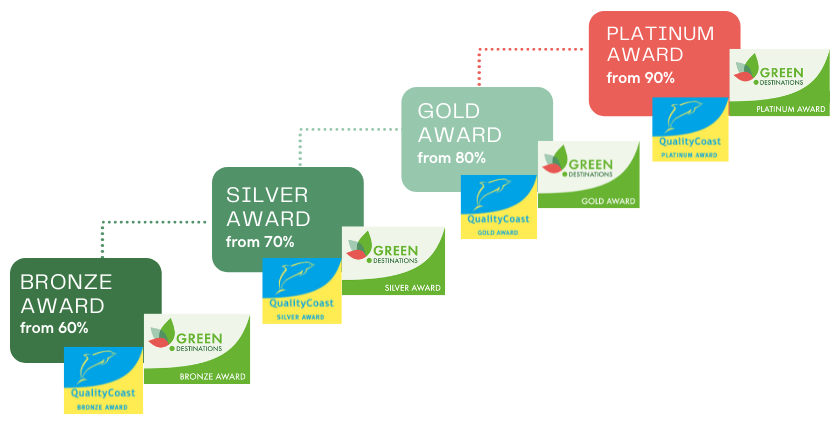
Source: Green destinations
- Travelife: Travelife is a leading training, management and certification initiative for tourism companies committed to reaching sustainability. The Travelife certification programme provides businesses with a state of the art and affordable certification standard to evaluate, prove and communicate your sustainability achievements. The Travelife certification programme follows a three-stage approach.
a. Stage 1: Travelife Engaged: In the first stage the company commits itself and introduces the appropriate management procedures. An appointed Sustainability Co-ordinator obtains the personal Travelife certificate and elementary steps and good practices are implemented. During this ‘engagement’ stage, the company itself is not rewarded yet.
b. Stage 2: Travelife Partner: Based on a sustainability report and compliance with basic requirements assessed by Travelife, the company reaches the Travelife Partner status. This status enables the company to communicate its sustainability commitment and achievements with the support of the Travelife Partner logo. The company is now qualified to work step-by-step towards the final stage.
c. Stage 3: Travelife Certified: In the third stage, the company’s compliance with the international Travelife Certified standard for travel companies will be evaluated by an independent auditor based on an on-site assessment. The requirements are stronger than the basic requirements of the Travelife Partner standard and are in line with the Global Sustainable Tourism Council (GSTC) Criteria and formally Recognised by the Global Sustainable Tourism Council.
Figure 7: Travelife Certification

Source: Travelife
- Green Key: Green Key International is an international eco-label awarded to accommodations and other hospitality facilities that commit to sustainable business practices. Awarded establishments comply with strict criteria, independently verified through regular on-site audits. It aims to contribute to the prevention of climate change by awarding and advocating facilities with positive environmental initiatives. Green Key (see figure 8) is one of the largest eco-labels for the hospitality industry worldwide and currently has more than 3,200 awarded hotels and other establishments in 65 countries.
The criteria focus on environmental management, technical demands and initiatives for the involvement of guests, staff and suppliers. Some of the categories covered are: Water, Waste, Energy, Involvement and Awareness of Guests, Environmental Management, Staff Involvement, Use of Chemicals, Open Spaces, and Food and Beverages.
Figure 8: The Green Key Gold standard
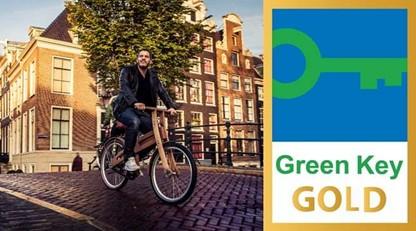
Source: Green Key
7. Examples of successful regenerative tourism businesses
As we plan for a new future of tourism, we have the opportunity to rethink how we travel, how we sell travel and how we can help improve the world in which we live. In the pursuit of this goal, regenerative tourism is much more than a new framework for rethinking the tourism sector. Practice shows that this idea has already found its way into real life cases. In this section, several successful examples of business that have embraced the ideas behind regenerative tourism into their daily business are presented. These examples are from different parts of the world, showing how widespread the concept is.
Tip:
- Take a closer look at these inspirational examples from all over the world. See what they have done differently in their vision and daily operations and see what you can do differently in your tourism company.
Mexico
The Via Organica Ranch (see figure 9) in San Miguel de Allande, Mexico, develops working models for how farmers can regenerate rural landscapes and rural livelihoods. The ranch is itself a working model for how 75 hectares of once degenerated farmland and pastureland can become a regeneration hub in the semi-arid highlands of Mexico, producing nutritious regenerative organic vegetables, herbs, fruits, seeds, and animal products for several thousand people. Visitors learn different organic and regenerative farming/land rehabilitation techniques including biointensive gardening, compost making, seed-saving, and tree-planting. Their plan is to revegetate the desertified landscapes of Mexico, the southern US, and beyond, with a polyculture of mesquite, nopal and agave plants, all native to Mexico. Thus, in this example, regeneration works on two levels, leaving the world better as before by: restoring landscapes and teaching visitors skills they can apply in their home countries.
Figure 9: Inside the Via Organica Ranch

Source: Via Organica Ranch
New Zealand
According to the Lonely Planet, the idea of "guardianship over the country" (called ‘tiaki’), originating from Aotearoa-New Zealand’s Māori population, is something that can be found throughout the whole country and is closely linked to the idea of regenerative tourism. Visitors are asked to take the Tiaki Promise (see figure 10 below) and share this on their social media. It is a declaration that "While traveling in New Zealand I will care for land, sea and nature, treading lightly and leaving no trace. I will travel safely, showing care and consideration for all. I will respect culture, traveling with an open heart and mind". The regenerative aspect shown in this example lies in the fact that this promise is in the DNA of the inhabitants and companies of New Zealand and is used to raise the awareness and consciousness of travellers.
Figure 10: The Tiaki Promise for travellers in New Zealand

Source: Lonely Planet
Guyana
Throughout Guyana, several Indigenous communities own and operate their own eco-lodges (figure 11). Rewa Village is one of them. Tourism economically benefits every community member and enables the community to protect the ecosystem it depends on, which has a local and global benefit. This community, which is home to more than 300 inhabitants, also manages a large conservation area of 350 square kilometres (271 square miles). This pristine rainforest ecosystem absorbs more than 70,000 tonnes of CO2 per year. Each traveller that visits generates about 2.8 tonnes of CO2, including international and domestic flight emissions. With 200 travellers per year, this equates to 560 tonnes of CO2 per year. Thus the site reduces CO2 emissions on the whole through tourism, leaving the world better than it was before. This is one small example that illustrates how travel can create net positive community and environmental benefits. The regenerative aspect here, is that this goes beyond sustainability and generates a positive total impact.
Figure 11: Aerial view on the Rewa Lodges
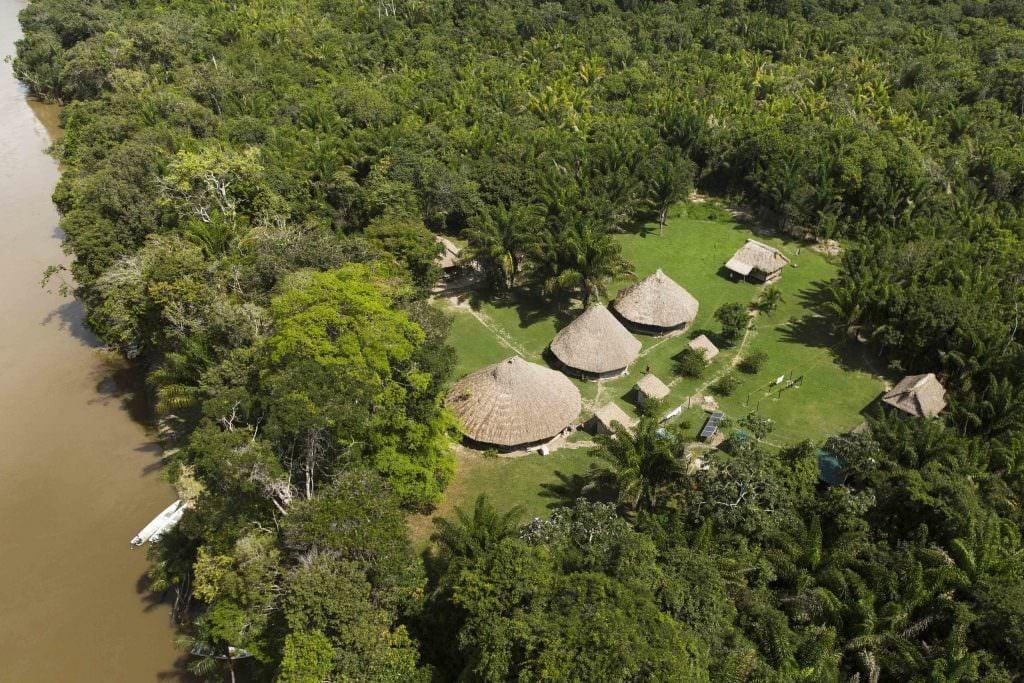
Source: Rewa Village
Myanmar
Another example comes from Myanmar. The international tour operator Intrepid Travel offers a multitude of "community-based tourism", or CBT, experiences specifically designed to benefit people and places. One example is a CBT lodge (as seen in figure 12) in Myaing, Myanmar, a joint project between Intrepid and the Myanmar non-profit ActionAid. It was created "to give communities living in poverty from villages near Myaing the opportunity to earn an alternative income and grow as a community, while giving travellers from around the world genuine insight into rural living in Myanmar”. As a bonus, the company one-upped its decade-long carbon neutral commitment in 2020: it will now offset 125% of its CO2 emissions[A1] , thus leaving the destination better than it was before.
Figure 12: A CBT lodge in Myaing, Myanmar

Source: Myaing, Myanmar
Costa Rica
The Osa Peninsula, in the southwestern part of Costa Rica, is one of the most wild, biodiverse regions in the whole country—and Lapa Ríos Lodge is completely in the middle of it all (see figure 13). Nestled in the canopy of a 1,000-acre private rainforest reserve, the lodge protects the surrounding area through nature conservation and community development. As a guest, you can witness their regenerative work through multiple tours, including a local medicine tour to learn about traditional medicinal plants, and a “Twigs, Pigs, and Garbage” tour that highlights their sustainability practices. You can even plant your own tree to contribute to the Lapa Ríos reforestation program and learn about its role in the ecosystem. This example shows that regeneration here serves two purposes: restoration of the forest and educating visitors by providing information and active participation in this restoration process.
Figure 13: Impression of the Lapa Rios Lodges, Costa Rica
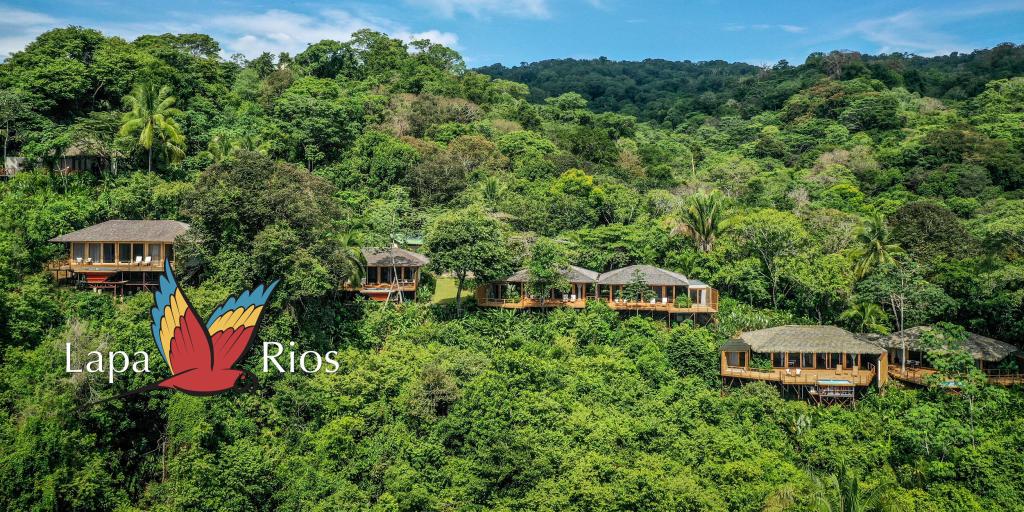
Source: Lapa Ríos Lodge
The Netherlands
In Amsterdam in the Netherlands, they’ve embraced the so-called ‘Doughnut Economics’ (see figure 14) to plan how the city will rebuild in a post-Covid-19 world, as an alternative to the normal economic model based exclusively on growth. The inside ring shows the minimum living standards of the city’s inhabitants. The outer ring shows the ecological limits of the planet that Amsterdam has to work with (but is currently exceeding). The dough in between the two is where we need to live: where economic activity meets the core needs of everyone, but stays within the limits of the planet.
In April 2020, this model was used for the first time by Amsterdam as a starting point for decisions concerning tourism. They were the first city in the world to have such a commitment. The Netherlands Board of Tourism & Conventions (NBTC) as a consequence announced a plan to focus its advertising and marketing on sites other than Amsterdam, redirecting tourists away from the city. The aim was to help control the numbers of tourists to the popular city. Amsterdam simply received more tourists than it could handle. Last summer the cities habitants even made a demand (a petition) to ask the Amsterdam city council to limit the number of tourists. Using this principle of the Doughnut, tourism can be used to generate only positive outcomes to the city and leave it in a better state than before.
Figure 14: The Doughnut model for Amsterdam, a thriving city
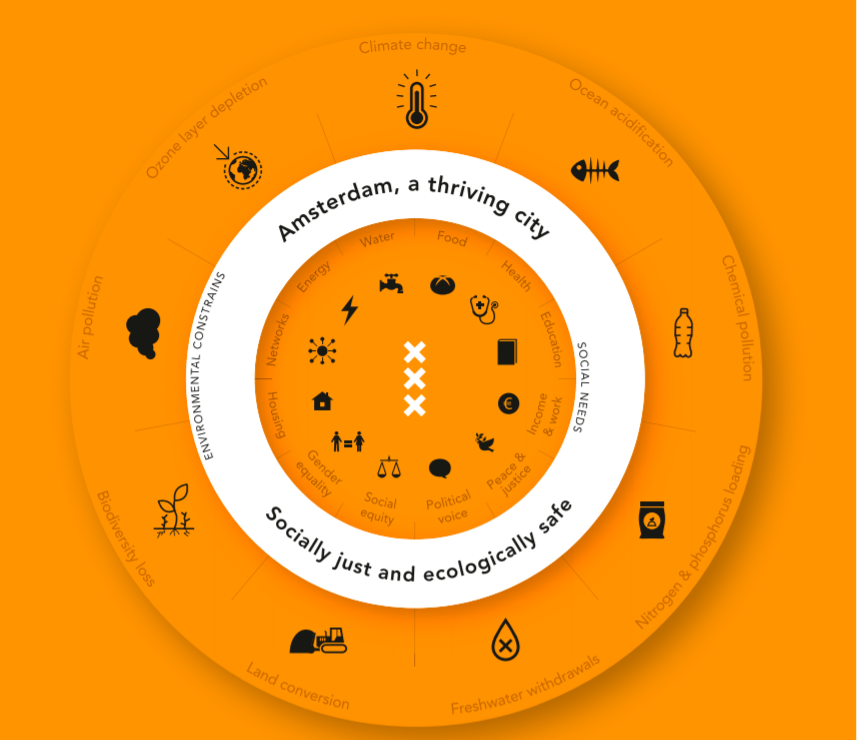
Source: Smart Cities World
This study was carried out on behalf of CBI by dr. Jasper Heslinga, Molgo and ETFI.
Please review our market information disclaimer.
Search
Enter search terms to find market research
